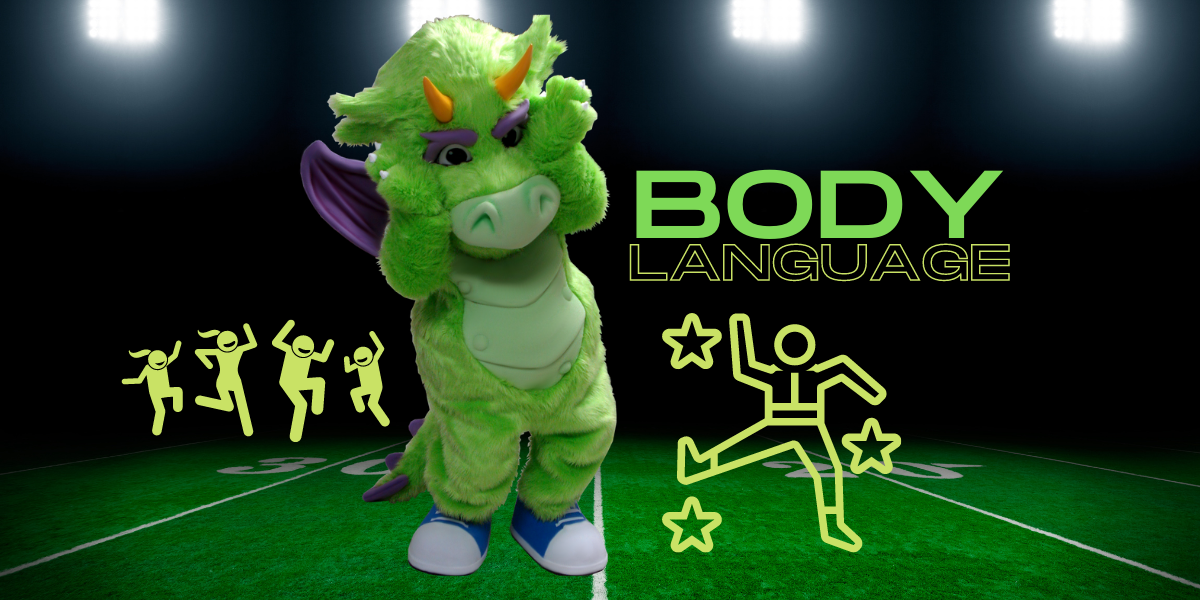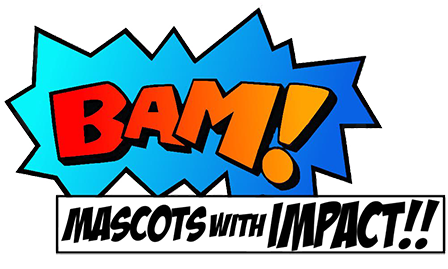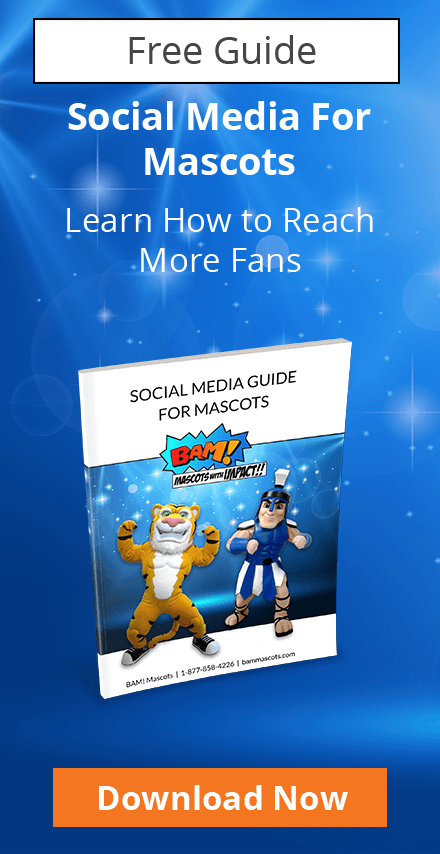
Mascots are entertaining, engaging, and highly expressive. They have to be, to entertain audiences of tens of thousands at a football game, or connect with a fan in a one-on-one moment. One reason that mascots rely on gestures is that they don’t often talk. This unique aspect of mascot characters has become the norm, even though it is possible to add an audio component (learn more in the blog about enhanced features).
Why are most mascots silent?
- Talking could be difficult in a mascot costume, projecting voice through the head structure.
- Limiting speech helps maintain consistency, especially when you have multiple performers for one costume.
- It’s more complex to come up with a suitable voice for a character. Many mascot performers are volunteers and not accomplished with voice acting.
Without a voice, how do mascot performers convey emotion and communicate?
The answer is body language. When you are feeling a certain way, it not only shows in your facial expression but in the way you carry your body. If mascot performers want to express an emotion, they pretend they are feeling that way, and they mimic the natural emotion with lots of exaggeration.
Here’s Some Body Language / Gesture Tips for Mascots …
Happiness – If you want your mascot to show exhalation, jumping up in the air, fist pumping, or high fiving can show a burst of happiness. Hopping or skipping is an action that people will interpret as carefree and lighthearted. When it comes to mascot hands, clapping, clasping or rubbing them together can express a positive emotion - so don’t forget small gestures with the hands.
Shyness – When playing shy, consider the way a young child looks when they first meet someone new. They may put their hands over their face while they tilt their head downwards to avert a gaze. Their body is often turned away from you, or they may try to conceal themselves behind another person. Mimicking these actions will give your mascot the look of being timid and cautious.
Sadness – When your mascot is sad, the emotion should reflect in its posture. Being hunched over (droopy), along with actions like pretending to sob will convey the feeling to the crowd. Remember that actions should be dramatic to tug on the audience’s heartstrings.
Embarrassment – Maybe your mascot’s dance moves went wrong, or it stumbled while walking. These are good moments to pretend embarrassment. For the right effect try not to look at people. The mascot could look to the side, or tilt its gaze downwards and shuffle its feet, or shake its head.
Stressed or Worried – If your mascot is stressed or worried (i.e. sports mascot watching their team make a difficult play), a recognizable gesture would be to put its hands on its cheeks and shake its head back and forth. This will give your mascot a look of “oh no, what’s about to happen?” Pacing is another action that your crowd will interpret as being a sign of stress.
Confusion – if your mascot is feeling confused, (the play is being disputed?) show disbelief by putting your hands out in front of you, palms facing up and shrugging in a “I don’t know” gesture.
Exhaustion – Feeling tired? Make it a part of your mascot’s act. Head to a bench or a shaded area and set your mascot up in a relaxed pose. Some mascots take a time out by sitting with fans on the bench or reading a paper in a deck chair.
Surprise or fear – If your mascot is scared by something (a penalty kick?) bring a hand up to its heart or out in front as if to shield itself and jump a little. This movement will show that something was a bit of a shock. Your mascot could also jump back from whatever has surprised or scared it.
Anger – While your mascot should never really be angry, there are times when you may want to show off the emotion in a fun way. A good example is when two mascots are “competing” against each other at a sport event. To mimic anger, clench your fists and lean forward. You want your stance to look strong and your body movement to be purposeful and abrupt.
Taking the time to practice your body language can really help boost your mascot performance. Watch videos with mimes or other mascots, and try to mimic their emotions just using your body language both in and out of costume. Try practicing in costume while in front of a mirror, so you can determine whether your gestures are large enough to be noticed in costume.
Adding these emotion based gestures to your mascot’s act will increase the personality of your character and develop a stronger connection with fans.
Related Content to Read
How to Create a Perfect Mascot Marketing Plan Through Character Development
7 Rules Every Mascot Performer Should Follow
5 Questions to Consider When Choosing a Mascot Performer
Time to get started on creating a new mascot costume for your team, school, or organization?
Contact us today. We’d love to help.





